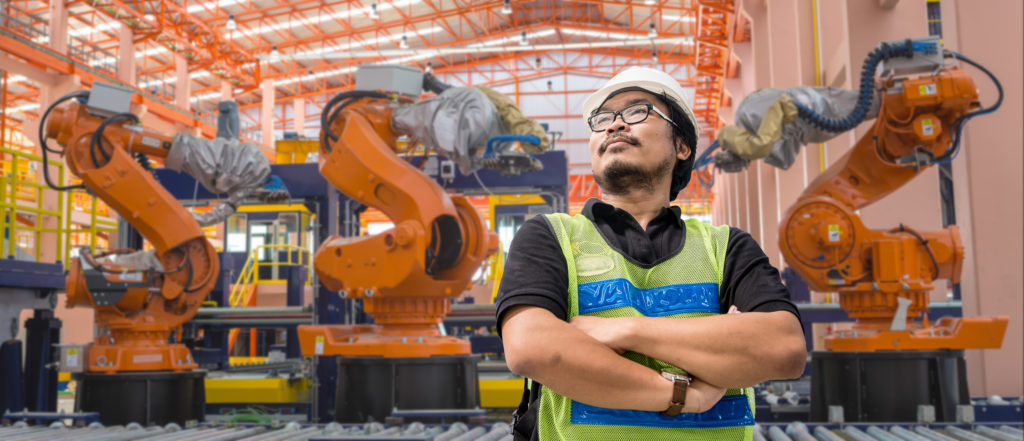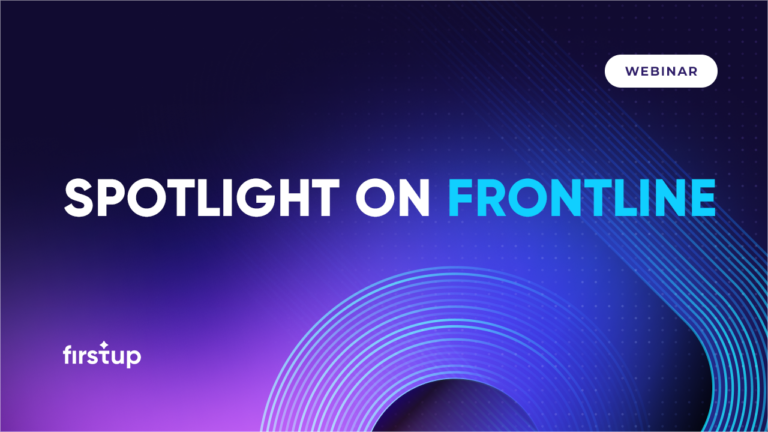Frontline workers are the backbone of many industries, accounting for over 80% of the global workforce. They are the driving force behind healthcare, retail, manufacturing, and more. Yet, despite their essential roles, these employees face significant barriers to engagement due to lack of access to communication tools, fragmented messaging from traditional top-down systems, and a templated approach that doesn’t personalize communications in an intelligent way. In fact, only 23% of frontline workers report having access to the digital tools they need to stay productive. This disconnect impacts not only employee morale but also leads to higher turnover, lower productivity, and reduced customer satisfaction.
The numbers don’t lie: Gallup’s 2024 research estimates disengaged employees cost the global economy a staggering $8.8 trillion annually. Meanwhile, PwC found that 73% of consumers view customer service as a key factor in their purchasing decisions, underscoring the link between frontline engagement and customer satisfaction.
For businesses to stay competitive, they need to go beyond outdated engagement strategies. Investing in modern technologies that cater to the unique needs of frontline workers isn’t just a nice-to-have—it’s a necessity for driving success in today’s market.
Key Takeaways
- Frontline workers make up over 80% of the global workforce, serving critical roles in healthcare, retail, and beyond.
- Only 23% of frontline workers have access to digital tools, impacting productivity and job satisfaction.
- Engaged employees drive business success, with companies seeing 43% lower turnover when prioritizing engagement.
- Mobile-first platforms enable real-time updates, crucial for industries like healthcare, where timely information impacts both safety and performance.
- Two-way communication enhances engagement, allowing frontline workers to give feedback and feel more connected to organizational goals.
- Investing in tech and onboarding ensures 69% higher retention rates, proving the value of supporting frontline workers from day one.
What is a frontline worker?
Frontline workers are the deskless employees we rely on every day—nurses caring for patients, grocery store clerks, bus drivers, and the construction workers building our cities. These workers are the heartbeat of industries like healthcare, retail, transportation, and construction, ensuring operations run smoothly and customer experiences are enhanced. Yet, many of these essential employees work in environments where access to traditional communication tools like email or corporate intranets is limited, leaving them feeling disconnected from their organizations.
Deloitte emphasizes the essential role frontline workers play in business success, particularly in shaping customer experiences, maintaining safety, and driving service quality. However, many businesses still rely on outdated methods like bulletin boards or word-of-mouth communication. These approaches fail to meet the fast-paced demands of industries like healthcare and retail. Without modern, mobile-first solutions, frontline workers are left out of the loop, limiting their ability to stay informed and perform at their best.
Investing in better communication tools for frontline workers isn’t just a matter of convenience—it’s essential for boosting engagement, productivity, and overall business success.
The current state of frontline engagement

Despite their critical role, frontline workers often face alarmingly low levels of engagement. In fact, only 13% of these employees feel engaged at work, according to Gallup. This isn’t just a HR issue—disengagement directly impacts the bottom line, driving down productivity, customer satisfaction, and retention rates.
Industries like retail and healthcare, where real-time updates are crucial to operations and safety, are particularly vulnerable. When frontline workers aren’t connected to vital updates or changes, they can feel increasingly detached, leading to higher absenteeism and turnover. Studies show that companies with high employee engagement experience 43% lower turnover proving that investing in engagement not only lifts morale but also dramatically improves retention and overall business success.
By prioritizing engagement, businesses can unlock the potential of their frontline workforce, leading to stronger performance and a more connected organization.
Expanding the role of technology in frontline engagement
To effectively support and empower frontline workers, businesses need to adopt a range of tech-driven solutions. Beyond communication, technologies like wearables, automation tools, and AI-powered scheduling systems help streamline day-to-day operations and enhance productivity. For example, in healthcare, real-time monitoring devices ensure patient safety, while in manufacturing, wearable tech improves worker safety by detecting potential hazards.
Mobile-first platforms also enable access to critical resources like training materials or task management tools, ensuring workers can perform their duties efficiently. According to Deloitte, companies that embrace these technologies see increased operational efficiency, lower turnover, and better overall performance. While communication is a part of these solutions, the focus here is on the breadth of technology that supports frontline workers, driving safety, efficiency, and productivity.
Optimizing internal communication for frontline workers
For frontline workers, effective communication is essential for staying aligned with company goals and responding to fast-paced challenges. Unfortunately, many organizations still rely on outdated methods such as posters or emails, which are not suitable for a mobile workforce. Implementing mobile-first communication platforms integrated with HR and task management systems ensures that workers receive real-time updates directly on their personal devices.
What sets modern communication platforms apart is their ability to facilitate two-way interaction. This means employees can provide feedback, report issues, and stay connected in real time. Gallup highlights that companies with robust communication strategies see a 23% boost in employee engagement, which directly contributes to reduced absenteeism and turnover. Investing in streamlined, real-time communication tools isn’t just about efficiency—it’s about creating an environment where every employee feels connected and supported.
Investing in onboarding: a crucial step for retention
Onboarding is a critical yet often underestimated aspect of employee engagement. Without proper onboarding, employees can feel disconnected and uncertain about their roles, which increases the likelihood of turnover. Research shows that businesses with effective onboarding programs see up to a 69% higher retention rate. This is particularly important for frontline workers, who may have less direct contact with management in the early stages of their employment.
A strong onboarding process should utilize technology to ensure consistency in training, feedback, and support. Mobile platforms can guide new hires through the crucial first days and weeks, delivering the information they need at just the right time. This approach guarantees that all employees, regardless of their location, experience the same high-quality onboarding, leading to early engagement and reducing the risk of turnover within the first 90 days.
Recognizing and rewarding frontline workers

Recognition is a key driver of employee engagement, particularly for frontline workers who may feel overlooked in large organizations. Digital tools can make it easy for managers to recognize achievements, whether through digital “thank you” notes, public shout-outs, or even rewards and incentives. Public recognition not only boosts individual morale but also fosters a culture of appreciation within teams.
Gallup’s research reveals that organizations with strong recognition programs experience up to 21% higher productivity. Frontline workers, in particular, thrive when their contributions are acknowledged, which leads to lower turnover and higher job satisfaction. Businesses should look to invest in platforms that make recognition simple and visible, ensuring that frontline employees feel valued every day.
Addressing the role of frontline managers
Frontline managers act as the essential bridge between leadership and employees, making their role pivotal to driving engagement. When managers have access to the right tools—such as scheduling flexibility, task management platforms, and real-time updates—they can better support their teams and keep operations running smoothly. Investing in digital platforms that streamline communication and provide easy access to critical information empowers managers to lead more effectively.
Did you know? One retail manager could be responsible for more than $80 million in annual revenue.
—McKinsey & Company
Managers are responsible for 70% of the variance in team engagement, , highlighting their influence on team motivation and productivity. By focusing on coaching and direct engagement, companies can unlock significant performance gains. Businesses that invest in leadership development and equip managers with the right tools often see better alignment with organizational goals and overall improvements in team performance.
The importance of personalization for frontline workforce engagement
A one-size-fits-all approach simply doesn’t cut it for today’s diverse frontline workforce. Personalized communication strategies—tailored based on employee roles, behaviors, and preferences—ensure that workers receive relevant information when it matters most. This approach is key to fostering engagement and aligning employees with company goals.
By leveraging data-driven communication platforms with intelligent personalization, companies can not only boost employee morale but also create more targeted, effective engagement strategies. These platforms help reduce turnover, foster loyalty, and ultimately improve business performance. When frontline workers feel informed, connected, and valued, it drives both engagement and productivity, leading to stronger overall outcomes.
Investing in the future of frontline employees
The future of work is undeniably digital, and frontline workers must be integrated into that transformation. Companies that prioritize their deskless workforce by investing in modern communication tools, training platforms, and recognition systems are better positioned to retain top talent, enhance productivity, and boost customer satisfaction. These technologies close the communication gap between management and frontline employees, fostering a work environment where everyone feels seen, heard, and valued.
Investing in frontline engagement tools isn’t just about improving employee well-being—it’s a business imperative. The right strategies lead to better alignment with company goals, increased productivity, and long-term success. As we look to the future, continuous innovation and investment in frontline teams will unlock the full potential of the workforce, driving sustained growth and excellence for years to come.
How Top Companies are Improving Frontline Worker Engagement
Dow Chemical
Dow Chemical faced a significant communication gap, with 60% of its workforce in manufacturing roles that had limited access to the intranet or email. Their traditional communication tools were not personalized, leaving employees disconnected. By adopting Firstup’s intelligent communication platform through their branded “Dow Connect” app, Dow centralized communications, achieving over 80% workforce engagement. Dow Connect allowed real-time updates, improved engagement, and provided employees with practical job information, fostering a more connected work environment. This transformation made communication easier, more intuitive, and accessible company-wide.
Phillips 66
Phillips 66 faced challenges reaching their 12,000 employees across different time zones effectively. Traditional company-wide messages often arrived at inconvenient hours, contributing to digital fatigue and lost engagement. By using Firstup’s intelligent communication platform, Phillips 66 launched “MyRoute” and implemented Engagement Boost, a feature utilizing machine learning to optimize message timing. This ensured communications were delivered when employees were most likely to engage. As a result, engagement rates at some facilities doubled, demonstrating a smarter approach to communication that avoids overwhelming employees.
Toyota
Toyota sought to ensure consistent communication across its 375,000 global employees, especially amid hybrid and frontline work environments. Using Firstup’s platform, branded as “One Toyota,” the company effectively “meets employees where they are.” Over 80,000 workers use the platform for practical functions like accessing schedules and payslips and to engage with cultural initiatives. With data-driven insights, Toyota has made communications more accessible and targeted, ensuring all employees—from office staff to production floor workers—are connected.
Brightview Senior Living
Brightview Senior Living faced communication challenges with its 4,600 frontline workers—caregivers, dining servers, and housekeepers—who lacked consistent access to company email and relied on bulletin boards or manager announcements. During the pandemic, they launched “BVLink” with Firstup’s platform in just three weeks. This swift implementation provided critical real-time updates to 93% of associates, ensuring they received vital information to keep residents healthy, even amid staffing and protective equipment shortages. This solution significantly bridged the communication gap, enhancing both safety and operational efficiency.
Prioritizing Frontline Worker Engagement for Lasting Success

Frontline workers are the foundation of business operations, yet they are often left out of critical engagement and communication strategies. By investing in intelligent communication platforms, companies can empower these essential employees, drive productivity, and improve retention. The right tools ensure that frontline workers feel valued, connected, and aligned with organizational goals. As businesses evolve, it’s clear that supporting and engaging frontline employees isn’t just a growth strategy—it’s a necessity for long-term success.
FAQs
Frontline workers are employees who perform critical, hands-on roles in industries like the healthcare sector, agriculture, and retail. These hourly workers ensure daily operations run smoothly by directly interacting with customers and handling essential tasks. Frontline workers work in roles that are indispensable for keeping businesses running efficiently.
Jobs considered frontline workers include healthcare workers, grocery store employees, agricultural workers, and those in the construction and transportation industries. These roles often require employees to be physically present, making them vital to the functioning of various sectors.
While many frontline workers are also essential workers, not all essential workers are frontline. Essential workers include employees in fields like utilities and logistics, which are critical to maintaining infrastructure, especially during crises, even if they don’t involve direct customer interaction.
Engaging a frontline employee improves productivity, boosts morale, and reduces turnover. Companies with highly engaged frontline employees typically experience lower absenteeism and improved customer satisfaction, which is vital for businesses like grocery stores and the healthcare industry.
Digital tools like mobile-first platforms help frontline workers by providing real-time updates and allowing them to stay connected and informed. This is especially important for managers and healthcare workers, where timely communication is crucial for success.
A frontline manager is pivotal in creating a positive work environment for frontline workers. By using effective tools for scheduling, task management, and real-time communication, they support their teams and help improve overall performance.
Engaging a frontline employee is essential for improving productivity, reducing turnover, and enhancing morale. Essential and frontline workers who feel connected to their organization are more likely to stay engaged, leading to better performance and higher job satisfaction.
Firstup can help you implement the best technology tools for successful employee communications and engagement. Contact us today for a free demo!
Download PDF








